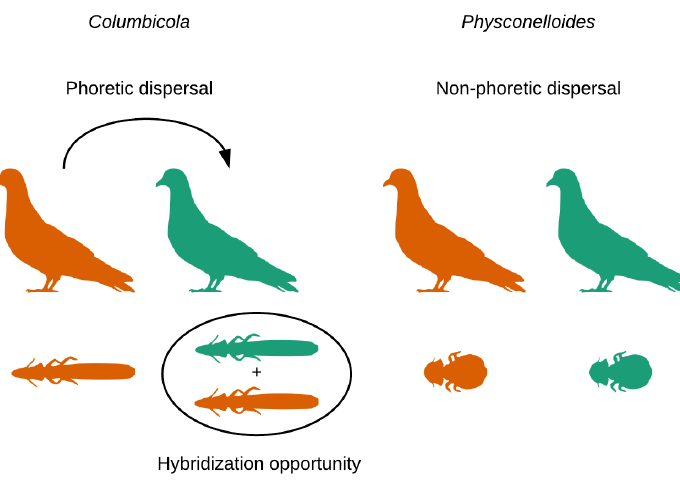Comparing rates of introgression in parasitic feather lice with differing dispersal capabilities

Comparing rates of introgression in parasitic feather lice with differing dispersal capabilities
Abstract
Organisms vary in their dispersal abilities, and these differences can have important biological consequences, such as impacting the likelihood of hybridization events. However, there is still much to learn about the factors influencing hybridization, and specifically how dispersal ability affects the opportunities for hybridization. Here, using the ecological replicate system of dove wing and body lice (Insecta: Phthiraptera), we show that species with higher dispersal abilities exhibited increased genomic signatures of introgression. Specifically, we found a higher proportion of introgressed genomic reads and more reticulated phylogenetic networks in wing lice, the louse group with higher dispersal abilities. Our results are consistent with the hypothesis that differences in dispersal ability might drive the extent of introgression through hybridization.